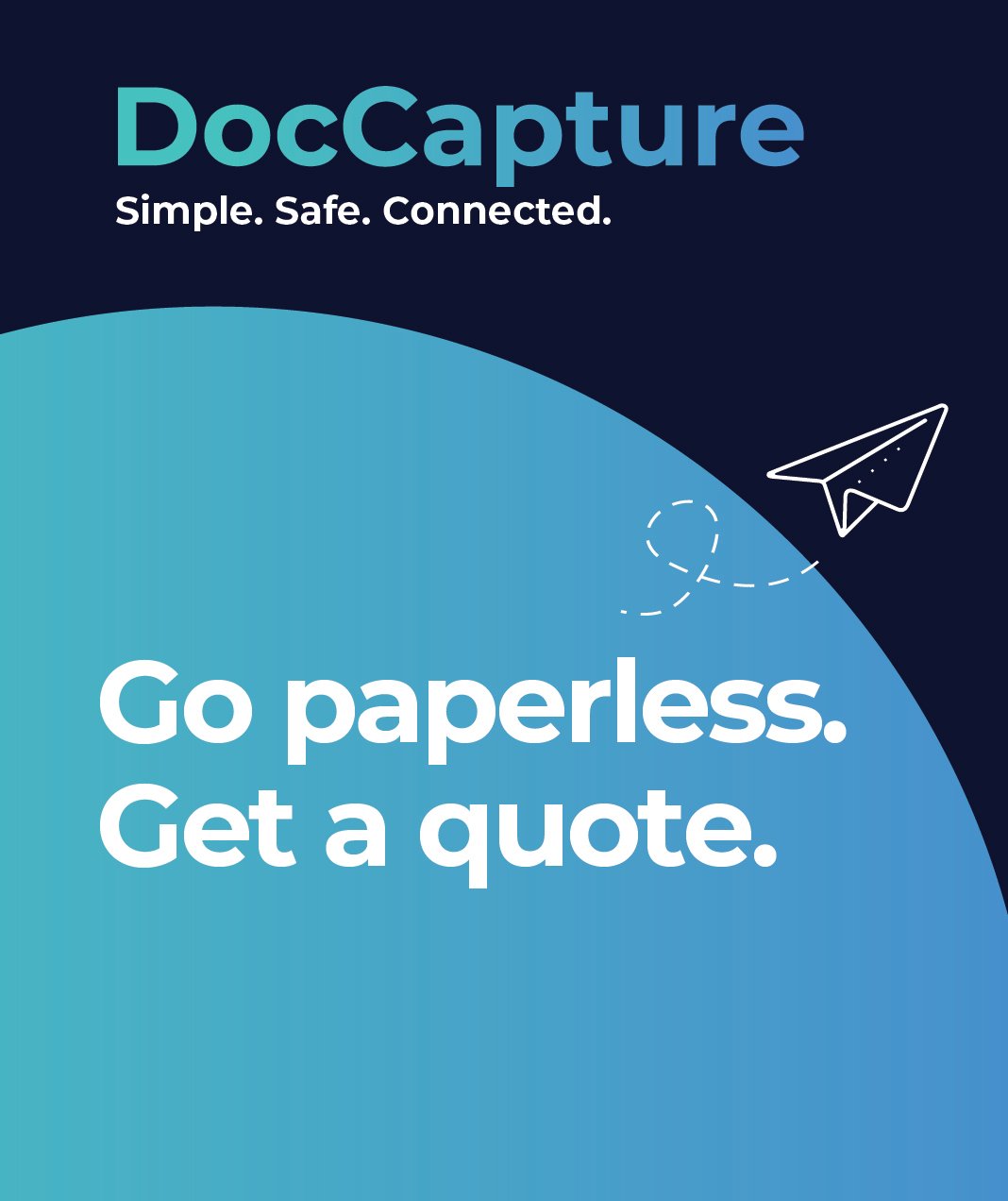Modernizing Record Management in Government with Scanning Solutions
Table of contents
Government agencies handle vast amounts of records, from public service documents to sensitive legal files. Traditionally, managing these records meant dealing with stacks of paper, manual filing systems, and slow retrieval processes. But in a world where digital access is the norm, paper-based systems no longer cut it.
Modernizing government record management isn’t just about efficiency—it’s about security, compliance, and making information accessible when it’s needed most. Advanced scanning solutions are at the heart of this transformation, helping agencies shift from outdated processes to a streamlined, digital-first approach.
Let’s explore why traditional record management is falling behind, how scanning solutions solve these challenges, and what the future holds for government document management.
The Challenges of Traditional Record Management
Many government agencies still rely on paper records, despite the growing push for digital transformation. While this approach has worked for decades, it comes with significant drawbacks that slow down operations and increase security risks.
Paper Records Slow Down Workflows
Accessing a physical document isn’t as simple as clicking a search bar. Government employees often spend valuable time searching through filing cabinets, requesting records from offsite storage, or waiting for interdepartmental transfers. These inefficiencies delay decisions, slow down public service delivery, and create unnecessary administrative bottlenecks.
Learn how document scanning improves government efficiency.
Security Risks Are High
Paper documents are vulnerable to loss, theft, and damage from fires, floods, or simple human error. Without proper security measures, confidential records can easily fall into the wrong hands. Unlike digital systems with access controls and encryption, physical files rely on locked cabinets and manual oversight—both of which are far from foolproof.
Explore how scanning protects government records.
Compliance Is Harder to Maintain
Government agencies must follow strict privacy and security regulations, including data protection laws and Freedom of Information Act (FOIA) requirements. Tracking who accesses a physical file, ensuring proper disposal, or meeting audit requirements is much more challenging with paper records. Digital solutions make compliance easier by offering audit trails and controlled access.
See how document imaging services help government departments stay compliant.
Budget Constraints Limit Modernization Efforts
Many agencies want to digitize their records but struggle with limited funding. Large-scale scanning projects can seem expensive upfront, making it difficult to secure approval for modernization efforts. However, failing to modernize leads to higher long-term costs in storage, labor, and inefficiencies.
Government professionals need a solution that balances cost, security, and accessibility. The good news? Advanced scanning solutions offer a way forward.
How Advanced Scanning Solutions Transform Government Record Management
Switching from paper to digital records isn’t just about convenience—it’s about creating a smarter, more secure, and cost-effective system. Advanced scanning solutions provide the tools government agencies need to modernize record management while staying compliant and within budget.
Instant Accessibility and Better Collaboration
Paper files slow everything down. When records are digitized, government employees can quickly search for and retrieve documents without digging through filing cabinets or waiting for interdepartmental transfers. Digital files also make collaboration easier, allowing teams to securely share information without physically moving documents from one office to another.
See how state and county governments benefit from document scanning.
Stronger Security Measures
Security is a top priority in government record management. Unlike paper files that can be lost or stolen, digital records can be encrypted, password-protected, and stored in secure cloud environments. Access controls ensure that only authorized personnel can view or modify sensitive documents, reducing the risk of data breaches.
Discover how scanning enhances security for local government records.
Guaranteed Compliance with Regulations
With advanced scanning solutions, government agencies can automatically log who accesses a document and when. Digital records also ensure compliance with retention policies and data privacy laws, making audits and legal inquiries much easier to manage.
Learn more about compliance and government document scanning here.
Cost Savings Over Time
Digitizing records might seem expensive upfront, but it leads to significant long-term savings. Agencies can cut costs related to physical storage, reduce manual labor associated with paper handling, and improve productivity across departments. Plus, digital files don’t require expensive offsite storage solutions.
See how large-format scanning improves access to government building information.
With these benefits in mind, the next challenge is implementation. Many government agencies face roadblocks when trying to adopt scanning solutions—but those challenges can be overcome.
Overcoming Common Government Adoption Challenges
Even with all the benefits of digital record management, government agencies often face obstacles when making the transition. From resistance to change to budget constraints, these challenges can slow down progress. Here’s how agencies can address them effectively.
Tackling Resistance to Change
Many government employees are used to traditional filing systems and may be hesitant to adopt new digital processes. The key to overcoming this is education. Hands-on training sessions, clear demonstrations of efficiency improvements, and real-world examples of how scanning solutions streamline work can help ease the transition. Showing how digitization reduces workload rather than adding to it can turn skeptics into advocates.
See how document scanning modernizes government operations.
Ensuring Seamless System Integration
One major concern for IT managers and digital transformation teams is whether scanning solutions will work with existing government databases and software. The best approach is to choose scanning technology that integrates with existing document management systems (DMS) and allows for smooth migration of records. Selecting a vendor experienced in working with government IT infrastructure is critical.
Learn how scanning solutions help government departments streamline record management.
Managing Budget Limitations
Budget constraints are a major hurdle for many government agencies. A phased implementation approach can make modernization more affordable. Instead of scanning every document at once, agencies can start with high-priority records and expand over time. Demonstrating a strong return on investment (ROI)—such as reduced storage costs and increased efficiency—can also help justify funding requests.
Explore the cost-saving benefits of government document scanning.
Once these challenges are addressed, agencies can fully embrace the benefits of digital transformation. But what’s next for government record management?
The Future of Government Record Management
As technology continues to evolve, government agencies have new opportunities to enhance their record management processes. Advanced scanning solutions are just the beginning—emerging innovations like AI-powered document processing and cloud-based storage are set to redefine how records are handled.
AI-Powered Document Scanning
Artificial intelligence is making scanning technology smarter. With automated indexing, AI can recognize text, categorize documents, and suggest filing locations, reducing the need for manual organization. This means government agencies can process large volumes of records more efficiently while improving accuracy in data retrieval.
Learn how AI enhances document scanning for government agencies.
Cloud-Based Storage for Greater Flexibility
More agencies are moving toward secure cloud storage to house their digital records. Cloud-based solutions provide:
- Stronger security with encrypted access
- Improved accessibility, allowing authorized personnel to retrieve files from anywhere
- Disaster recovery, ensuring records are never lost due to fires, floods, or other emergencies
By embracing these innovations, governments can ensure long-term efficiency, security, and compliance in their record management processes.
Discover how scanning helps state and local governments modernize record management.
With these advancements on the horizon, there’s never been a better time for agencies to transition to a modern, digital-first approach to record management.
Conclusion
Modernizing government record management isn’t just about going paperless—it’s about improving efficiency, security, and compliance while cutting costs. With the right scanning solutions, agencies can move away from outdated filing systems and embrace a future where documents are instantly accessible and fully protected.
Government IT leaders, compliance officers, and records management professionals all play a role in driving this transformation. By implementing advanced scanning solutions, agencies can ensure they meet legal requirements, reduce administrative burdens, and improve public service delivery.
If your agency is ready to take the next step, DocCapture provides secure, high-quality scanning solutions designed specifically for government needs.
Ready to modernize your record management? Fill out our "Get a Quote" form today and start your agency’s digital transformation.
Share this
You May Also Like
These Related Stories

Routing Incoming Mail with Digital Mailroom Services

Reducing Manual Workload with Automated Scanning Solutions

